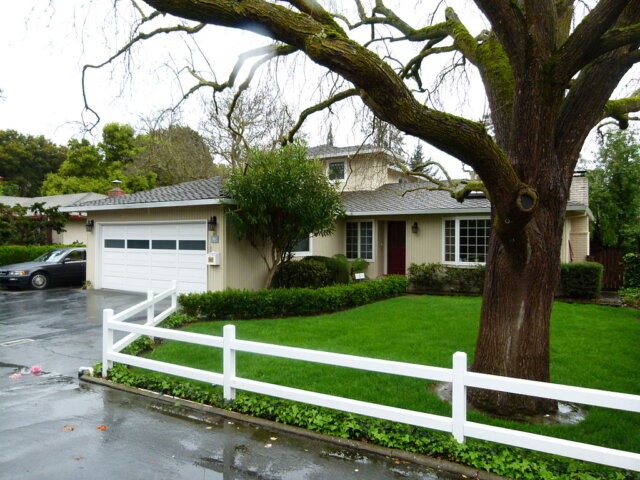“Can you believe it? Google, the search giant we all turn to, has been with us for a whopping 25 years! From those early days of simple searches to now being an integral part of the medical world, Google’s journey is nothing short of fascinating.
For all you physiotherapists, doctors, and patients out there, this isn’t just tech history. It’s about how Google has reshaped the way we access health information, making it easier, faster, and more reliable.
So, whether you’re reminiscing about the days before instant online answers or curious about how Google has influenced healthcare in India, you’re in for a treat.
Let’s dive into this incredible journey together!”
Tracing Back to Google’s Humble Beginnings
Imagine a world where you couldn’t just type a question into a search bar and get an answer in seconds. Sounds challenging, right? That was the reality before Google stepped onto the scene. Let’s journey back to those early days.

In September 1998, two Stanford University students, Larry Page and Sergey Brin, launched Google from a friend’s garage. Their mission? To organize the world’s information and make it universally accessible. Little did they know, their brainchild would become an essential tool for millions, including healthcare professionals like physiotherapists and doctors.
Back then, Google’s homepage was a simple white page with a colorful logo and a search bar. No ads, no fancy features. Just pure, unadulterated search. In its first month, Google saw around 10,000 searches per day. Fast forward to today, and that number has skyrocketed to over 5.6 billion searches daily!
For the medical community in India, this was revolutionary. Before Google, accessing medical journals, research papers, or even basic health information was a tedious task. Libraries, physical copies of journals, and direct consultations were the primary sources of information. But with Google’s rise, a world of medical knowledge opened up. You could now find research, understand medical terms, or even locate a nearby clinic, all with a few keystrokes.
But it wasn’t just the ease of access that made Google a game-changer. It was the reliability. Google’s algorithms ensured that credible and authoritative sources, like renowned medical institutions and journals, appeared at the top of search results. This was crucial for doctors and physiotherapists who needed accurate information for diagnosis and treatment.
For patients, it meant empowerment. No longer were you in the dark about your symptoms or treatment options. With Google, you had a wealth of knowledge at your fingertips, helping you make informed decisions about your health.
So, while Google’s beginnings were humble, its impact, especially on the healthcare sector in India, has been monumental. From that simple search bar to becoming an indispensable tool for medical professionals and patients alike, Google’s journey is a testament to the power of innovation and vision.
Milestones in Google’s 25-Year Journey
When you think of Google today, it’s hard to picture that simple search engine from 1998. Over the past 25 years, Google has introduced a slew of innovations, each marking a significant milestone. Let’s walk through some of these game-changing moments, especially those that reshaped the medical landscape in India.
2000: Introduction of Google AdWords
While not directly medical, AdWords allowed clinics, hospitals, and private practices in India to reach a wider audience. This meant you, as a patient, could find local medical services more easily.
2004: Google Scholar Debuts
This was a big one for the medical community. Suddenly, doctors and physiotherapists had access to a vast array of academic papers, articles, and journals. Research became more accessible, ensuring that you received care based on the latest findings.
2008: Google Health Launched
Though it was discontinued in 2011, Google Health was an early attempt to create a centralized health information repository. It gave a glimpse into the potential of digital health records, something that’s now becoming a reality in many Indian hospitals.
2015: Google Cardboard and VR
Virtual Reality took a leap with Google Cardboard. For medical students and professionals, this meant exploring the human body in 3D, attending virtual surgeries, and offering remote consultations. Imagine getting physiotherapy guidance through VR!
2017: Google’s DeepMind AI Predicts Patient Deterioration
DeepMind’s breakthrough in predicting patient deterioration was a glimpse into the future. With AI’s help, doctors could get alerts about potential health risks, ensuring timely intervention.
2019: Google Search Introduces Symptom Cards in India
Ever typed your symptoms into Google? Now, with symptom cards, Google provides a quick overview of conditions, helping you understand potential health issues better. It’s like having a mini-medical guide at your fingertips.
2021: Google Maps Adds COVID-19 Hospital Information
In response to the pandemic, Google Maps started showing COVID-19 related information for hospitals in India. This was crucial in those trying times, helping you find hospitals with available beds and resources.
These milestones, among many others, highlight Google’s commitment to making information not just accessible but also valuable. For the bustling medical community in India and for patients seeking clarity, Google’s 25-year journey has been nothing short of transformative.
My Early Days in Physiotherapy: Before the Digital Revolution
In the early days of my physiotherapy journey, things were quite different. The digital revolution hadn’t taken India by storm yet, and our tools were our hands, our knowledge, and the trust our patients placed in us.
I remember the hours spent poring over textbooks and journals, trying to grasp the nuances of the human body and the best techniques to aid its healing. There were no online databases or quick Google searches to rely on. Every piece of knowledge was hard-earned, often from physical books, seminars, and discussions with fellow physiotherapists.
Patient records were a world apart from today’s digital systems. I meticulously maintained handwritten notes for each patient, detailing their progress and treatment plans. Appointments were scheduled in diaries, and reminders often meant personal phone calls to ensure no one missed out on their session.
But amidst these challenges, there was a beauty to this era. The lack of instant digital communication meant that every patient interaction was deeply personal. I got to know my patients, not just their ailments. We shared stories, laughter, and sometimes even tears. This bond, I believe, played a crucial role in their healing process.
Keeping up with the latest in physiotherapy was a challenge. Without the convenience of online courses or webinars, I often waited eagerly for the latest editions of international journals or for experts visiting India to conduct workshops. But this only fuelled my passion for continuous learning and growth.
Looking back, those early days laid a solid foundation for my practice. They taught me the importance of personal touch in healing, the value of continuous learning, and the need to adapt and evolve. As the digital age dawned and transformed the world of physiotherapy, I was ready, with my roots firmly grounded in the lessons from my early days.
Google’s Emergence: A New Era in Medical Practice
When Google first made its appearance, I doubt any of us in the medical field truly grasped the revolution it would bring. It started as a simple search engine, but for professionals like me, it soon became a gateway to a world of knowledge.

Before Google, accessing the latest research or understanding a new technique often meant waiting for journals to be delivered or attending conferences. But with Google, a treasure trove of medical information was just a click away. I recall the excitement of being able to instantly pull up research papers from international sources or watch videos of new physiotherapy techniques. It felt like the world had suddenly shrunk, and everything was within arm’s reach.
For my patients, Google’s emergence meant empowerment. They began coming to sessions armed with information, eager to discuss what they had read or clarify doubts. While this did mean debunking a few internet myths now and then, it was heartening to see patients take an active interest in their health and recovery.
But it wasn’t just about information access. Google Maps made it easier for patients to locate my clinic, and Google Calendar ensured timely reminders for their appointments. These might seem like small things, but for a bustling practice, they made a world of difference.
Perhaps one of the most significant shifts was in the realm of continuous learning. With platforms like Google Scholar, staying updated became a daily habit rather than a periodic activity. It allowed me to bring the very best to my patients, ensuring they benefited from the latest in physiotherapy and rehabilitation. In essence, Google’s emergence didn’t just change how we accessed information; it transformed the very fabric of medical practice. It bridged gaps, fostered patient-doctor relationships, and ushered in an era where knowledge truly became power.
Read More:
Google and Healthcare: A Journey Together in the Digital Age